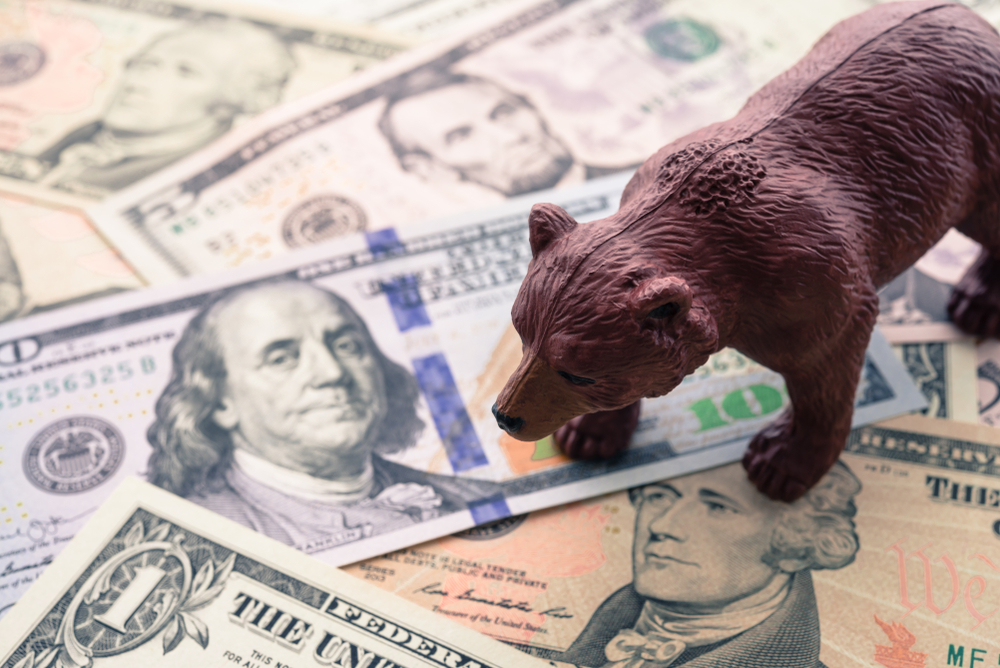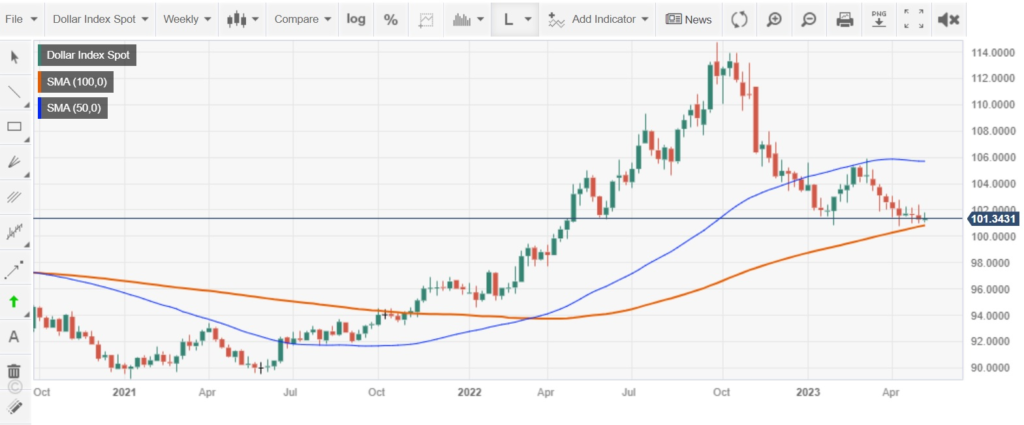Key Takeaways:
- When analyzing the potential strength or weakness of the US dollar, technical analysis is a good place to start.
- If inflation subsides, a 10% generalized dollar depreciation will likely occur this year.
- A weaker US dollar would increase volatility in financial markets, impacting investor confidence.

WISCONSIN (CoinChapter.com) — The US dollar has been the world’s reserve currency for decades, but recent events have raised concerns about its long-term stability.
The US Dollar Index (DXY) went on a long stretch from November 2021 to December 2022, trading above the 50-day and 100-day Moving Averages (MAs).
However, previous dollar strength has now turned into weakness. Now, for the first time in 2023, bears have significantly pushed to test the 100-day MA after blowing through the 50-day MA last December.

As inflation continues to subside, the Federal Reserve will soon loosen its monetary policy, which has led experts to predict that the dollar could weaken by as much as 15% in the next four to six quarters.
The Impact of Inflation on US Dollar
Inflation has been a significant concern for the US economy in recent months. The Fed has been working to keep inflation under control, but rising prices have led to fears that the Central Bank may have to tighten policy sooner than expected.
If inflation subsides, a 10% generalized dollar depreciation will likely occur this year and potentially more next year. This is because a weaker dollar boosts exports, which would help the US economy recover from the pandemic.
A weaker dollar would also lead to higher inflation in other countries, resulting in the Fed’s tightening policy and a stronger currency.
The Role of Risk Sentiment
Another factor contributing to a weak dollar is risk sentiment.
Concerns about contagion in the US regional banking sector lead investors to seek safe-haven assets, such as the dollar. However, if the banking sector worsens, it will lead to a flight to safety from the dollar to other currencies, weakening the currency.
Additionally, geopolitical risks, such as tensions between the US and China, could impact risk sentiment and lead to a weak US dollar.
Impact on the Global Economy
A weaker US dollar will make exports more competitive, helping to boost economic growth. That, in turn, will lead to higher inflation in other countries, again leading to tighter monetary policy and slower economic growth.
A weak US dollar increases volatility in financial markets, impacting investor confidence. In addition, countries that rely on exports to the US will face challenges as demand will be lower for their goods and services.
Overall, the potential weakening of the dollar is a significant concern for investors and policymakers alike. But, of course, many factors are at play, including inflation, risk sentiment, and technical analysis; predicting the impact on the global economy is challenging.


